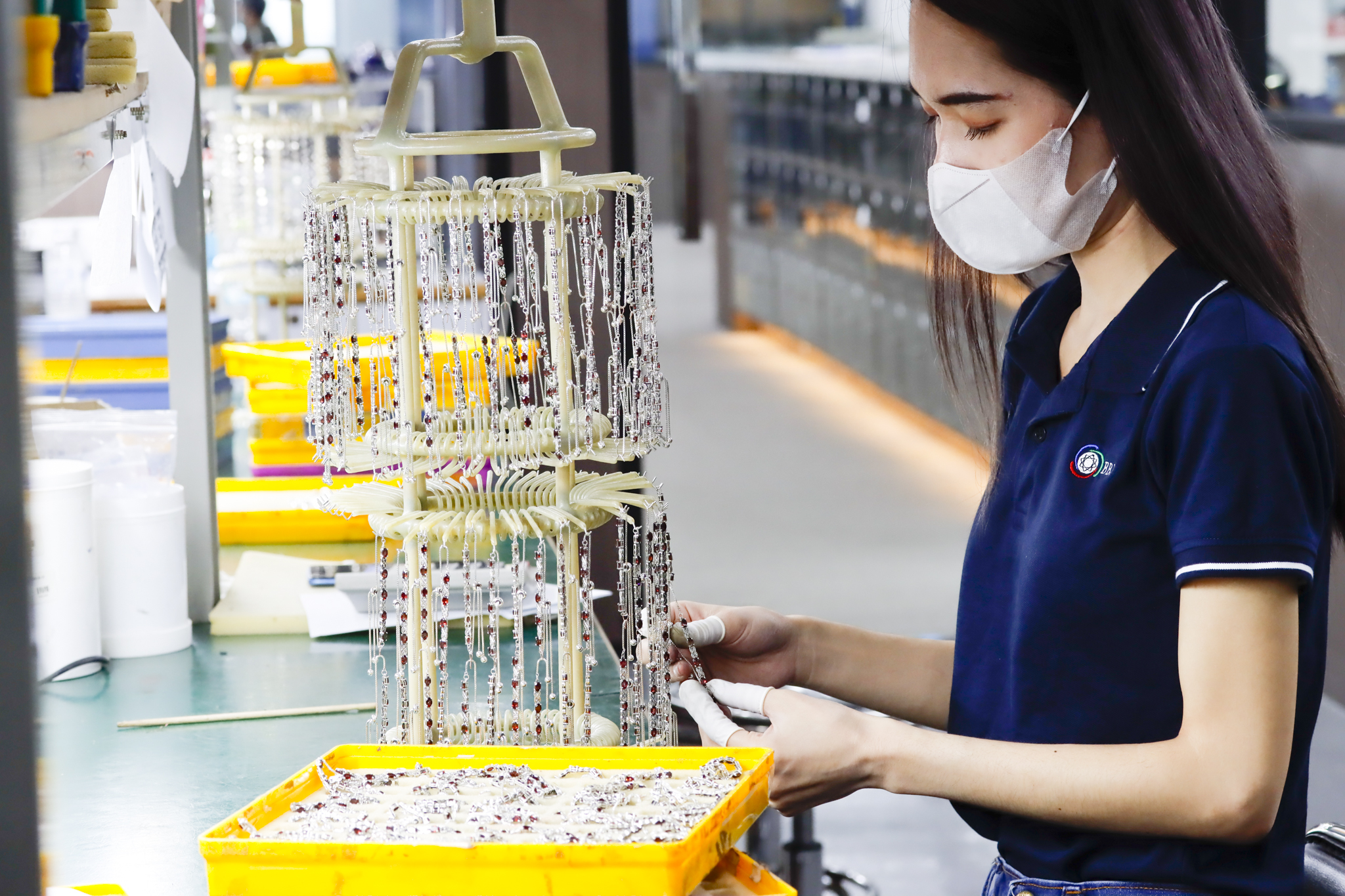Jewelry plating is a process utilized to enhance the appearance and durability of jewelry. The jewelry plating process involves applying a thin layer of metal over the surface of another metal to fashion a new surface with a more attractive appearance. The jewelry plating process also makes items more resistant to wear and tear.
The most frequently used plating options to create long-lasting and attractive jewelry finishes are gold plating and rhodium plating. The technicalities of the plating process are similar for both Rhodium and Gold plating, the only difference is the metal used for plating.
The technical steps required to set up and successfully plate jewelry are as follows:
Cleaning: The first step in the plating process is to thoroughly clean the jewelry. This is to remove any dirt, oil, or other contaminants that may be present on the surface being plated. This step is crucial to ensure the plating solution adheres properly.
Electroplating Solution: When the jewelry has been cleaned it is ready for plating. The plating solution is comprised of metal salt and acid. The metal salt is the metal that is going to be used for plating (rhodium or gold). The type and mixture of acid used depends on if the plating to be applied is rhodium or gold. The solution is then applied to the jewelry using a brush or dipped in a tank.
Electric Bonding: This step applies an electrical current to the jewelry by immersing the jewelry in the plating solution and connecting it to a power source. The electric current causes the metal ions in the solution to be attracted to the surface of the jewelry, forming the thin layer of metal plating required.
Current Density: Current density is what determines plating efficiency and thickness. Measured in amperes per square decimeter, the current density for rhodium plating is typically around 15-20 A/dm². For gold plating, the current density should be around 2-5 A/dm².
Plating Time: The time jewelry items need to be left in the plating solution is dependent on the required plating thickness. Rhodium plating usually needs a plating time of around 2-5 minutes, while gold plating typically requires as long as 15-20 minutes.
Post-treatment: After plating the jewelry item/s are rinsed in water to remove any excess plating solution. The jewelry is then dried and inspected for any defects or unevenness in the plating.
Jewelry plating drying time depends on the type of plating, the thickness of the plating, and the method of drying.
For rhodium plating, the drying time is normally very short, often only a few minutes. This is because rhodium plating is typically a thin layer, and therefore it dries fast. Whereas for gold plating, the drying time is usually longer, taking 10-15 minutes. This is because gold plating is often a thicker layer so therefore takes longer to dry. After plating, the jewelry should be handled with care, and even after it has been rinsed and dried it is recommended to wait for at least 15 minutes prior to wearing it.
We should also note that some jewelers use a special drying method like a heated drying cabinet to speed up the drying process. Drying times can also be affected and vary owing to environmental conditions, such as humidity and temperature.
In closing, jewelry plating is an important process that can enhance the appearance and durability of a piece of jewelry. Rhodium plating and gold plating are the two most popular plating methods used to create a durable and attractive finish on jewelry. Remember that plating jewelry calls for a multi-step process that involves cleaning the jewelry, applying an electroplating solution, and then using electricity to bond the metal to the surface of the jewelry. It is crucial to have the correct current density and plating time to achieve the desired thickness and finish. Post-treatment is also important to ensure the final product is free of any defects. At BBJ Bangkok we plate all our jewelry in-house with pride.





whmbrr
hvGIkQUpLYcT
jNbYqzkityhFOHVx
EmMkthzxIRBdFUp
rHiBIvMWqy
MVpTbifkeX
dgQfBcmbY
YBxlbvsJO